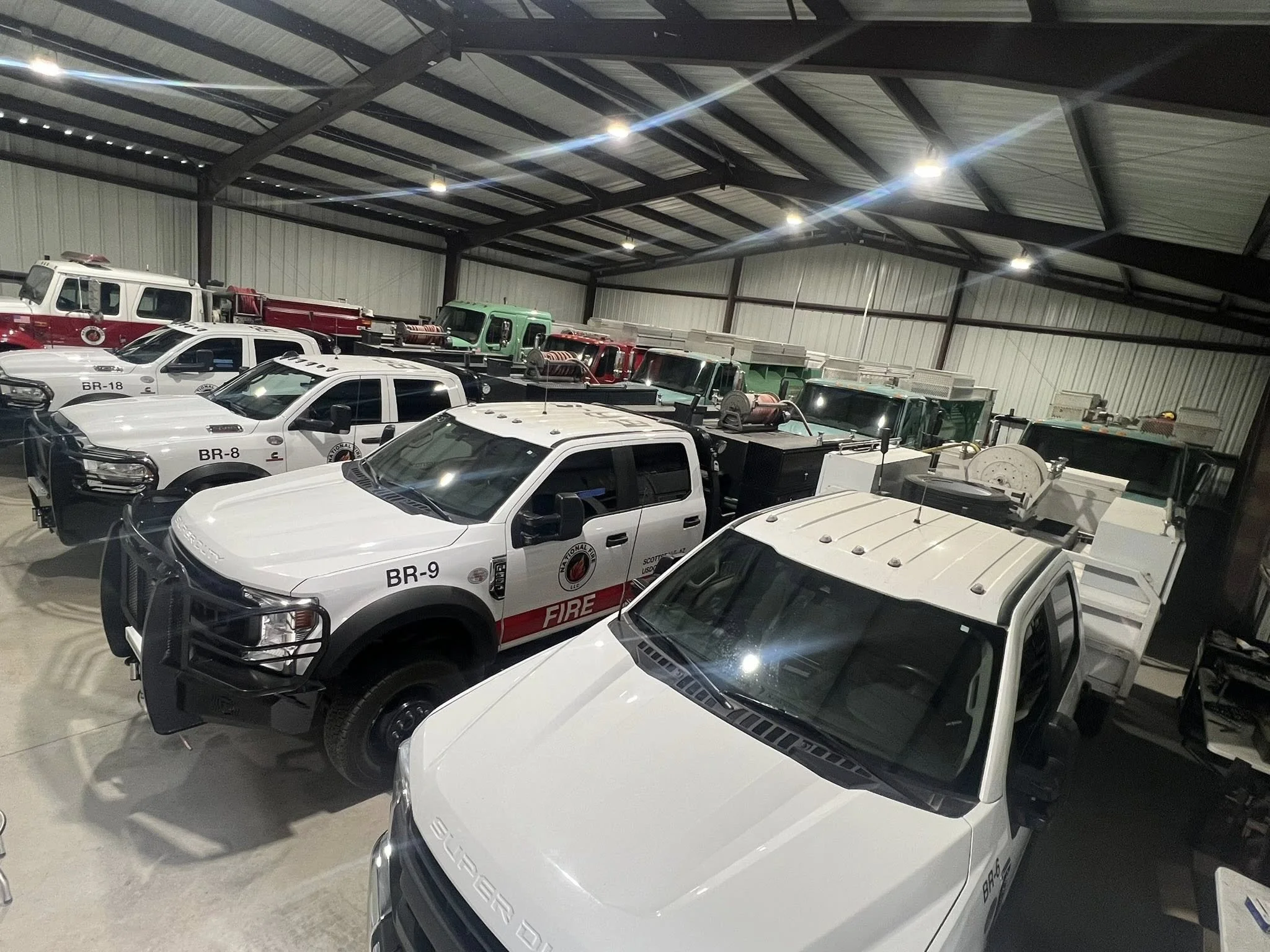
Our Fleet
🔴 Type 3 Engine (Wildland Engine)
Water Tank Capacity: 500+ gallons
Pump Capacity: 150 gpm
Crew Size: 3–5 firefighters
Use: Most common for wildland fires. Designed for rugged terrain, can pump while moving (“pump-and-roll”), and used directly on firelines.
🔴 Type 6 Engine
Water Tank Capacity: 150-400 gallons
Pump Capacity: 50 gpm
Crew Size: 2-3 firefighters
Use: Extremely Common for initial attack, mop up, and patrol
🔴 Type 4 Engine (Wildland Engine)
Water Tank Capacity: 750+ gallons
Pump Capacity: 50 gpm
Crew Size: 2-3 firefighters
Use: Carries more water than a Type 3 but less maneuverable. Great for initial attack and water shuttle operations
🔴 Support Tender
Carries 2000 - 6000 gallons of water dependent on the tender
Supports Engines in Remote Areas
Refills Type 3-6 Engines
Supplies Potable Tanks
Shuttles Water Contiuously
Wildfire seasons are getting longer, hotter and more destructive than ever before. With so many fires burning across multiple states at the same time, government agencies can’t do it alone. That’s where contract wildland firefighters come in.
Contract crews, engines, water tenders and support staff provide flexible, highly trained resources that can be mobilized quickly wherever they are needed.
Expand surge capacity when simultaneous large fires occur.
Provide specialized equipment such as Type 3–6 engines, water tenders, dozers, and faller modules.
Supply trained, qualified personnel who meet NWCG standards.
Ensure cost efficiency—contract resources are paid only when mobilized, reducing overhead for agencies.
Allow rapid mobilization across state lines under national contracts and dispatch systems.
In many regions, contract firefighters make up a significant portion of suppression resources. They’re not just “extra help”—they’re an essential part of the firefighting force that keeps America’s wildfire response system functioning.








